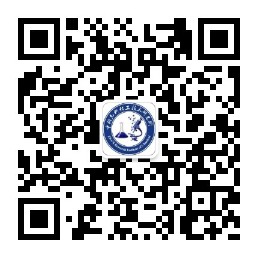歡迎訪問中科光析科學技術研究所官網!
- 聯系我們
- 關注微信

歡迎訪問中科光析科學技術研究所官網!


免費咨詢熱線
400-635-0567|
電子收費專用短程通信系統檢測項目報價???解決方案???檢測周期???樣品要求? |
點 擊 解 答?? |
本標準規定了電子收費系統框架模型的總體架構、邏輯實體和實體間的接口描述、規定了系統中涉及的安全體系。 本標準適用于公路收費系統、城市道路收費系統,停車場收費系統也可參考執行。
GB/T 20851的本部分規定了電子收費專用短程通信應用層的核心框架以及傳送內核、初始化內核和廣播內核提供的基本服務。本部分適用于公路和城市道路電子收費系統,自動車輛識別、車輛出入管理等領域可參照使用。
本標準規定了智能運輸系統(ITS)消息集模板的框架、屬性。本標準適用于ITS中各種應用系統之間的消息交換,也適合于用戶對ITS消息的邏輯說明。
GB/T 31024的本部分規定了合作式智能運輸系統對象通信關系及專用短程通信參考架構、專用短程通信支持的主要智能運輸系統業務以及專用短程通信技術的要求、專用短程通信設備要求、安全要求及時間管理等。本部分適用于合作式智能運輸系統中專用短程通信子系統應用的設計、開發、運行和維護,是制定合作式智能運輸系統中專用短程通信應用的技術實現標準、質量測評標準及工程標準的依據。
GB/T 31455的本部分規定了快速公交(BRT)智能系統的組成部分,并給出了各組成部分的內容及其關系。本部分適用于快速公交(BRT)智能系統的建設與管理。
This standard specifies the Application Layer Core which provides communications tools for applications on DSRC. These tools consist of Kernels that can be used by application processes via service primitives.
The project defines parameters to be used in DSRC-communication between mobile and fixed equipment.
This part of ISO 17575 defines the format and semantic of the data exchange between a Front End (OBE plus optional proxy) and corresponding Back Ends in autonomous toll regimes. This part of ISO 17575 deals with the definition of the data elements used to report charging details from the Front End to the Back End and to receive data which can be used to re-configure the ongoing process of gathering charge relevant information in the Front End.
This part of ISO 17575 defines how to convey all or parts of the data element structure defined in other parts of ISO 17575 over any communication stack and media suitable for this application. It is focussed on mobile communication links. Wired links, i.e. back office connections, can use the same methodology.
This European Standard specifies the Application Layer Core which provides communication tools for applications based on DSRC. These tools consist of Kernels that can be used by application processes via service primitives. The application processes, including application data and application specific functions, are outside the scope of this European Standard.\nThe standard is named \"Application Layer\" although\n— it does not cover all functionality of OSI Layer 7 and\n— it includes functionality from lower layers.\nThis European Standard uses services provided by DSRC Data Link Layer, [EN 12795], and covers functionality of intermediate layers of the OSI Basic Reference Model [EN ISO/IEC 7498-1].\nFigure 1 illustrates the global data flow between the parts of the DSRC stack (Physical, Data Link and Application Layers) and the application.\nNOTE For definitions of the terms used in Figure 1 see [EN ISO/IEC 7498-1].\nThe following subjects are covered by this European Standard:\n— application Layer structure and framework;\n— services to enable data transfer and remote operations;\n— application multiplexing procedure;\n— fragmentation procedure;\n— concatenation and Chaining procedures;\n— common encoding rules to translate data from abstract syntax ASN.1, [ISO/IEC 8824-1], into transfer syntax, [ISO/IEC 8825-2], and vice versa;\n— communication initialisation and release procedures;\n— broadcast service support;\n— DSRC management support including communication profile handling.\nIt is outside the scope of this European Standard to define a security policy. Some transport mechanisms for security related data are provided.\nNOTE During the lifetime of ENV 12834:1997, no implementation of the Broadcast Pool functionality has become known. Broadcast Pool functionality is therefore considered untested and is kept in this European Standard for compatibility with the ENV only.
This document specifies DSRC profiles which provide coherent sets of communication tools for applications based on DSRC. These sets consist of subsets of functionality described in EN 12253, EN 12795 and EN 12834, out of which a minimum subset is mandatory.\nThe DSRC Standards EN 12253, EN 12795 and EN 12834, which together form a three-layered architecture for DSRC, are designed to encompass a wide range of services for different purposes in order to make the basic DSRC architecture suited for many different applications and for a wide range of possible products and systems.\nDSRC systems can be built using one-way (downlink) or two-way (interactive) communication. The DSRC profiles described in this document are intended for interactive DSRC systems based on two-way communication and DSRC systems using one-way communication (broadcast services).\nWhile EN 12253 contains very little variation, EN 12795 and especially EN 12834 describe a wide range of communication services. It has not been considered feasible to assume that any one piece of equipment is designed to implement all of these services. It is often the case that the functionality of the on board unit is more limited than the functionality of the roadside unit.\nThis document covers\n— Physical Layer parameter values\n— Data Link Layer subsets\n— Application Layer subsets\n— Initialisation procedures\n— Late response procedures\n— Termination procedures
 前沿科學
微信公眾號
前沿科學
微信公眾號
 中析研究所
抖音
中析研究所
抖音
 中析研究所
微信公眾號
中析研究所
微信公眾號
 中析研究所
快手
中析研究所
快手
 中析研究所
微視頻
中析研究所
微視頻
 中析研究所
小紅書
中析研究所
小紅書